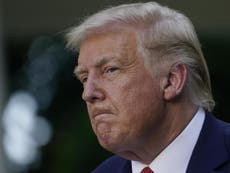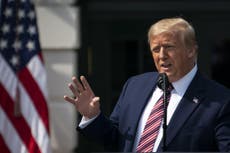Climate change is actually pretty easy to solve — even easier than Joe Biden thinks
Making America carbon-neutral is a lot simpler than most people will admit, and it can be achieved with a couple of economic tricks

A crisis, as President Barack Obama’s chief of staff Rahm Emanuel said, is a terrible thing to waste. And the message behind Democratic presidential nominee Joe Biden’s newly expanded climate change plan is that he’ll leverage the short-term crisis of coronavirus and attendant economic collapse to fix the world’s biggest medium-term crisis.
Happily, it’ll be easier than you think.
Biden’s plan calls for spending $2 trillion over four years on a broad range of initiatives, from advanced battery research to debt forgiveness for developing countries that adopt renewable power. But really, only the core of it needs to work: If America switches to electric vehicles and moves utilities decisively to green electricity, it should dramatically cut carbon emissions and contain — maybe even begin rolling back — atmospheric pollution.
It will stimulate an economy that will sorely need it, even next year. And it can be done fairly cheaply, given the stakes.
The reason is simple: 55 percent of US carbon emissions come from transportation and utilities. Utility emissions have been dropping since George W Bush’s administration, thanks partly to policies Biden helped craft as Obama’s vice president. The other big climate job is to use federal money — lots of it — to get people to buy electric vehicles. Biden’s plan does much else, but if it does those two things well, that will be likely enough.
“When Donald Trump thinks about climate change, the only word he can muster is ‘hoax,’” Biden said. “When I think about climate change, the word I think of is ‘jobs.’”
Under the Paris Accords, the US committed to cut carbon emissions up to 28 percent from 2005 levels by 2025. The Obama administration’s Clean Power Plan and natural-gas fracking helped cut emissions about half that much. But emissions from transportation, which spews out 27 percent of carbon, have stayed high.
As you can see, the amount of emissions available to cut from those two places alone is more than Paris requires.
Electricity has seen better results than cars because leading utilities have gone green in earnest, and US drivers haven’t. The 2009 stimulus implemented tax incentives to help cut the cost of electricity plants using wind and solar technology, which then were more expensive than fossil fuel plants.
Incentives helped nearly quadruple the percentage of US power that comes from wind and solar since 2008, to 11 percent last year. Add in nuclear, which Biden proposes to expand, and hydropower, and nearly 40 percent of US electricity is carbonless. Getting power to 100 percent carbon-neutral by 2050 is aggressive, but not ridiculous: Progressive utilities like Minneapolis-based Xcel Energy already expect to do it, with 80 percent cuts by 2030.
These tax credits only cost $7 billion a year, according to the congressional Joint Committee on Taxation. Scaling them up so utilities switch faster won’t break the bank: The federal deficit was $2.7 trillion from last October through June.
Cars are a tougher problem, but solvable.
The issue is that only 2 percent of US car sales are electric vehicles, including plug-in hybrids. In Germany, that number is 9 percent. EVs cost more, which is being resolved, slowly, as battery prices drop. Bloomberg New Energy Finance says EVs will be as cheap as conventional cars around 2025. For now, a plug-in hybrid BMW X3 is $5,000 more expensive, before subsidies, than a gas-powered model. The question is how to get Americans to buy EVs en masse, beginning sooner.
The answer is: subsidies. Americans buy 17 million cars and light trucks yearly. There’s a $7,500 federal tax credit on most EVs except Teslas (current law phases out subsidies as sales grow; Tesla and General Motors have used their allowance), costing less than $1 billion yearly. Biden proposes restoring the full tax credit, and some Democrats would expand it.
If every buyer switched to EVs, a $7,500 credit on 17 million vehicles would cost $127.5 billion yearly — about as much as taxing dividends and capital gains less than salaries. (Taxing them like little people’s income might be a good way to pay for it, if we got deficit-conscious). Since everyone won’t switch at once, and luxury cars could be excluded, it’ll cost less.
You’d have to subsidize EVs for about five years until they're as cheap as gasoline-powered vehicles. It should create jobs: Traditional automakers, including GM and Ford, are developing competitive EVs, as are American upstarts Nikola, Rivian and Fisker. Even Tesla’s US-based — its California factory was financed by Obama’s stimulus.
If Biden zeroes out carbon from personal cars, electric power and buses by around 2035 — and coming close is plausible — that could cut emissions by half. Those wins would let us work on the rest. The goal is net-zero emissions from all sources by 2050, Biden’s plan says.
Barriers to cutting emissions haven't been technical, but economic. Now cost curves have crossed in electricity, and soon will for cars. Private companies can build EVs and wind turbines: Government money can make us buy them faster.
Even a limited — or, dare I say it, neoliberal — government can solve this problem. But America’s government will need leaders with brains less mushy than Goya beans and the Trumps who hawk them.




Join our commenting forum
Join thought-provoking conversations, follow other Independent readers and see their replies